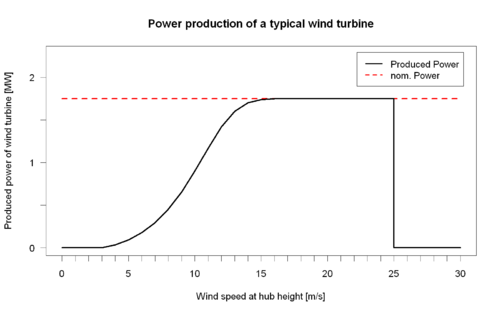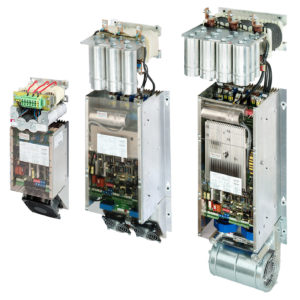Basic Electrical Generation Schemes of Wind Machine
In this article we will learn about the basic electrical generation schemes of wind machine.We will also know about the Double induction generator and DC exciter.

Basic Electrical Generation Schemes of Wind Machine.
Basic Electrical Generation Schemes of Wind Machine
Several schemes for electric generation have been developed. These schemes can be broadly classified under three categories.
- Constant speed constant frequency systems (CSCF)
- Variable speed constant frequency systems (VSCF)
- Variable speed variable frequency systems (VSVF).
-
Constant Speed Constant Frequency System (CSCF)
Constant speed drive has been used for large generators connected directly to the grid where constant frequency operation is essential.This system is totaly identify basic electrical generation schemes of wind machine.
-
Synchronous Generator
For such machines the requirement of constant speed is very rigid and only minor fluctuations about for short durations (fraction of a second) could be allowed. Synchronization of wind driven generator with power grid also will produce problems with gusty winds.

-
Induction Generator
If the stator of an induction machine is connected to the power grid and if the rotor is driven above synchronous speed Ns (N=120 f/p), the machine becomes a generator not delivers constant line frequency power to the grid. (f=line frequency and p= number of poles for which the stator winding is made).
The per unit slip is 0 and 0.05. the output power of wind driven induction generator is uniquely determined by the operating speed. The pull out torque (T m) condition should not be exceeded. When this happens, the speed continues to increase and the system may ‘run away’. The torque-speed characteristics of an induction machine in the motor and generating modes. Induction generators are simpler than synchronous generators. They are easier to operate, control and maintain, have no synchronization problems and re-economical. However, they draw their excitation from the grid and hence impose reactive volt ampere burden. But static capacitors can be used to overcome this problem. It is also describe the title which is Basic electrical generation schemes of wind machine.
-
Variable Speed Constant Frequency (VSCF) system
Variable -speed drive is typical for most small wind generations used in autonomous applications, generally producing variable frequency and variable voltage output. The variable speed operation of wind-electric system yield higher annual energy fields per rated installed kW capacity. both horizontal axis and vertical axis turbines will exhibit this gain under variable speed operation. The popular schemes to obtain constant frequency output are as follows.
-
AC-DC-AC Link
With the advent of high-powered thrusters and high voltage D.C. transmission system, a c. output of the 3-phase alternator is rectified using a bridge rectifier and then converted back to a.c. using line-commutated inverters. They utilize an a.c. source (power lines) which periodically reverses polarity and causes the commutation to occur naturally. Since the power line automatically fixes frequency, they are also known as synchronous inverters.
-
Double Output Induction Generator
In this system, a slip-ring induction motor is used. Rotor power output at slip frequency is converted to line frequency power by rectification, inversion output power is obtained both from stator and rotor, and hence this device is called double output induction generator. Rotor output power has the electrical equivalence of additional impedance in the rotor circuit. Therefore, increasing rotor outputs lead to increasing slips and higher speeds. Such an operation increases the operating speed range from Ns to 2Ns, i.e. slip varying from 0to 1.0.
-
Common Commutation Generator
This system is also known as Scherbius system employs two polyphase
Windings in the stator and a commentator winding on the rotor. Basic problems in employing this device for wind energy conversion are the cost, the additional maintenance, and the care required by the commentator and the brush gear. It is also description of basic electrical generation schemes of wind machines.
-
Variable Speed Variable Frequency (VSVF) System
Since resistive heating loads are essentially frequency insensitive, the a.c. generator can be affected at a variable frequency corresponding to the changing derive speed. For this purpose capacitor, excited (self-excited) squirrel caze induction machines can be conveniently used. These systems are gaining importance for standalone wind power applications. The magnitude and frequency of the emf depends on the value of the load impedance, prime-mover speed and excitation capacitance. Methods of analyzing these variable-voltage variable frequency generators have been developed to predict the no-load and load performance characteristics. Computer programmes have also been formulated for this purpose. this system is also describe according to title which is basic electrical generation schemes of wind machine.

The varying output voltage can be converted to constant d.c. using choppers or controlled rectifiers on constant a.c. using force-commutated inverters. AC converters and transducers can be introduced to minitor and control the desired performance quantities.
Hence these are basic electrical generation schemes of wind machine . We studied about the variable speed varialbe frequency system and also about variable speed constant frequency system. If you will find any incorrect in above article you must comment in comment box.